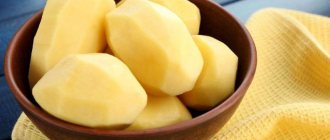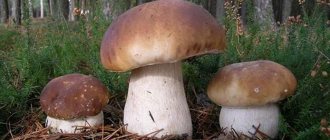Walnut is the fruit of a tree of the genus Juglans (FamilyJuglandaceae). It was brought to Russia from Greece, which is where it got its name. But its homeland is Asia Minor and Central Asia.
These fruits contain an abundance of vitamins and microelements that are necessary for even overweight people and vegetarians. The nut kernel is a source of healthy monounsaturated and polyunsaturated fats and vegetable protein. And the unripe fruit contains a huge amount of vitamin C and, of course, iodine. The nut is inexpensive and available to eat all year round.
What causes nuts to spoil?
In general, all products undergo changes over time, and nuts are no exception. If walnuts are left in a bag, they will soon become moldy, bitter, or even dry out. Why is this happening? Since nuts contain an abundance of fats, they contribute to the unpleasant taste and spoilage of the product. Unshelled nuts must be kept at a certain temperature. If it is at a high temperature, a rancid taste will appear.
There are certain rules under which fruits must be stored; if you follow them, the nuts will retain their aroma and beautiful golden tone for a long time.
High and low air humidity
Spoilage most often occurs if the product has been left in a damp room for a long time. As a result, the kernels become damaged by mold and become unsuitable for eating.
Corrupted kernels
Prolonged storage in too warm and dry a room leads to desiccation and drying out of the kernels. Over time, they noticeably decrease in size and lose their pleasant, sweetish taste. Together with the moisture, valuable oils, which contain a lot of useful substances, evaporate from the nuts. In addition, at temperatures above 20˚C, pest larvae begin to become active, which can destroy most of the reserves.
Important information: A common cause of mold is late harvesting. A nut that falls from a tree onto wet ground spoils within 3-4 days. Therefore, owners of household plots should get into the habit of collecting fruits that have fallen to the ground every day and immediately sending them for drying.
If you are stocking up for the winter and purchase nuts in large quantities, then before purchasing, be sure to crack 5-10 pieces and taste them.
Which ones to store?
Walnuts can be stored in a hard shell for a long time; the fruits should not be overdried, they should be cleaned of green skin, and there should be no cracks in the hard shell.
The temperature at which fruits are stored well should be suitable - from +10 to -5 degrees. The intended place where the nuts will be stored should be dark (pantry, cellar) with a humidity of no more than 60%.
Where is it better to place the fruits? Vegetable nets, boxes or canvas bags are ideal for storing walnuts in shell.
These rules will help preserve the healing properties of nuts throughout the year, while winter is on, and their taste will not deteriorate.
It is important to know! Twice a month it is necessary to inspect nuts for the appearance of fungus, remove spoiled ones from whole kernels, so that the infection process does not progress further.
Properly harvested fruits, when the green peel has already opened, can be stored for about 2 years. In this case, the walnut must be thoroughly dried and not separated from the wood shell. In case of early harvest, it can be kept at home in a place without access to light for no more than one year.
Nut kernels should be kept in the kitchen cabinet for no more than 30 days. Nuts that are stored in a large glass container with a closed lid may not lose their properties for about five months, and the taste will not change. If you freeze a nut, it can keep well and not spoil for about a year.
If the nuts are green
This situation is not at all uncommon. Many sellers knock the fruits off the branches. Although the first rule for determining the ripeness of nuts is that the shell bursts and they themselves fall to the ground.
If after purchase it turns out that the grains are green, do not be upset. Yes, they will not ripen at home and should not be eaten either.
But it is from green nuts that an amazing medicine is prepared. To do this, you need to grind them together with the peel, fill a jar or bottle a quarter and fill it with moonshine, vodka or medical alcohol diluted to 45 degrees. The tincture should stand for 40 days. After filtering, it can be used for grinding and ingestion (if medical alcohol was not used) to get rid of almost all ailments.
Storing shelled nuts at home is not difficult at all. Follow the recommendations suggested in the article, and they will last until the next harvest without any problems.
How to choose nuts
When you want to preserve nuts, you need to choose hard-shelled fruits, because they are stored for about one year, but nut kernels can last only a month. Peeled nuts should be consumed immediately. You can eat them pure or add them to baked goods or desserts.
In order to select a nut for long-term preservation, you must choose one that has no wood defects on the shell and has been cleared of the green shell. You can pick up a nut and feel it by weight, this will let you know whether the kernel is intact or not. When you shake the fruit and you hear a knock, this may mean that the kernel is dry and it is better not to buy it.
When choosing walnut kernels, close attention should be paid to ensuring that they are whole and not crushed, preferably the same color and without a white coating, in order to avoid buying spoiled goods (last year's nut). You need to buy it in a store, because if they are sold on the street, they are susceptible to rapid contamination by dust and exhaust gases, as a result of which pathogenic microbes develop in them. When buying nut kernels, you need to taste and smell them. The nut should not be rancid or have any foreign rotten odors.
Storage methods
The nut will not become covered with a white coating or fungus, will not lose its quality and will not taste bitter if you follow certain storage rules, for which special conditions must be created. The method of storing shelled nuts is different from the method of storing nuts in the shell. In the first case, the nut must be stored in a dark and cool place in a container - a glass, plastic or metal container, where it is tightly closed with a lid. A suitable place would be the refrigerator or a cold, dry cellar, or you can freeze them in airtight bags in portions in the freezer. Walnuts in shell are placed in large containers - bags made of natural fabric, cardboard boxes, or wooden boxes.
One general rule for storage is a dark place out of direct sunlight. Then all the vitamins will remain in place and the taste will not deteriorate.
Another way to store nuts is to make jam from them. The green nut is washed and poured with sugar syrup, this is all infused for 2 days, then the syrup is drained and boiled. Pour in the nuts and leave for another 1 day. The syrup is again drained and boiled. Then pour this syrup over the nut again and put it on low heat, cook for 15 minutes. Next, pour the jam into sterilized jars. This jam is a real storehouse of iodine.
Sorting
Before storing the nut, it is necessary to re-sort it, namely to remove fragments of the peel, partitions inside the nut, branches and leaves. All nuts are carefully selected and inspected for damage or mold. All spoiled kernels must be thrown away. It is necessary to pay attention to the taste of the nut; it should not be rancid, and the smell should not be rotten.
The sorted nuts must be processed before storage, since during the sale they absorb dust and dirt.
Why are nuts roasted?
First of all, walnuts are washed under running cold or warm water and fried over low heat for about 15 minutes, placing them in a frying pan (in this case, no oil is added). We must ensure that the nucleoli do not darken. You can also roast the kernels on a baking sheet in the oven by setting the timer for one hour at medium temperature. This way, excess moisture will come out of the nuts and they will dry thoroughly, therefore, their shelf life will increase. When the nut is exposed to temperatures, insect larvae are neutralized.
It is important to know! When processing nuts in this way, some of the vitamins and microelements disappear.
Why do you freeze nuts?
An urgent question that arises when it is necessary to store shelled nuts for a long time. Of course, the shelf life increases, but nuts lose their nutritional properties in small quantities, and their taste may also change. How to store shelled nuts in the freezer?
To do this, the nuts must be divided into small batches (approximately 300 g each) and placed in ziplock bags; you can use foil for these purposes. This is necessary to protect the nuts from foreign odors and excess moisture.
It is important to know! Under no circumstances should a thawed product be frozen.
Climatic conditions for storing nuts
By observing optimal climatic conditions, you can significantly increase the shelf life of the product.
Remember that for storing for a long time, only whole fruits with intact shells are suitable.
Condition 1: Maintain a stable temperature between -3°C and +5°C
| |
Condition 2: Maintain air humidity to 60%
| |
Condition 3: Keep in a dark place
|
How to save cleaned kernels
The shelf life depends on factors such as temperature, humidity level, and storage location.
Shelled nuts will not last more than 3 weeks; if kept at room temperature, they lose their taste and become bitter. Consumption will only cause harm, not benefit.
It is best to store the nut at a low temperature so that the humidity is less than 60%. The best place in the house would be a pantry or dry cellar, where sunlight does not penetrate. It is necessary to regularly inspect the kernels and dispose of spoiled fruits. They may grow mold or become very dry. It is best to store peeled nuts in glass jars with a closed lid, a plastic container, ceramic dishes in a cool place (maybe in the refrigerator) or a hermetically sealed bag or foil in the freezer.
Ways to extend shelf life
If you want to extend the shelf life, this can be done in 3 ways:
- Pre-roast the nuts in the oven or in a frying pan, and then store them. Pour the peeled kernels into a large frying pan, place the frying pan on heat and fry the nuts for about 15-20 minutes, stirring occasionally. There is no need to add oil to the pan. Roasting is necessary in order to prevent mold and also eliminate bacteria. Another option is to place the kernels, washed under water but dried, on a baking sheet and then place it in the oven. Set the temperature to approximately 120-140 degrees; if you have a powerful oven, then open the cabinet door slightly to regulate the heat. You need to roast the nuts for about 30-40 minutes, do not forget to periodically turn them over with a wooden spatula so that the kernels do not burn. After roasting, pour the nuts into a clean and dry cup, then wait until they cool completely before storing. You need to roast nuts if you are going to store them for a long time - a month or more. The shelf life of fried kernels ranges from 3-4 months to six months.
- freezing. Place the prepared kernels in a plastic bag and then put them in the freezer. The temperature in the freezer should be below -15 degrees; after a couple of hours, the contents of the bag will harden. You can preserve peeled walnuts in this form for almost one year. When you need the product, remove the bag from the freezer and leave to defrost naturally for a couple of hours. Then rinse the kernels, dry them, or heat them in a frying pan to remove all moisture. The nuts are ready to eat;
- in vacuum bags. Nowadays you can buy special vacuum bags in household goods that extend the shelf life of nuts to almost six months. Place the washed kernels into a bag and remove the air from it. Then place the package in a kitchen cabinet, pantry, or in any room, but at a temperature of up to 25 degrees Celsius and without access to light.
On a note! When using vacuum bags, buy them in small volumes so that after opening you can eat the entire contents in a couple of times.
Storage in shell
To store walnuts in the shell for a long time, choose medium-sized fruits, the shells of which should be undamaged and not too thick. Fully ripened nuts have a high oil content and have a pleasant taste without bitterness.
To keep the nuts in their shells, first dry them in small batches in the oven, placing them on a baking sheet. Look for a dry place in the pantry or attic, where they put it in bags made of natural fabric, boxes made of cardboard or wood, after placing cardboard on the bottom, the temperature should not be higher than 10 degrees. Sunlight should not penetrate into areas where nuts are stored.
Do nuts lose nutrients over time?
When the nut ripens, its green shell falls off. While the nut is in a green shell, it is better not to collect it, since the nut will lose its protective function from the harmful effects of sunlight and oxygen. If you remove the protective layer of the nut, then the beneficial substances quickly evaporate from the kernel and vitamins are destroyed. When this peel falls off by itself, all the nutritional properties of the nut are preserved.
The hard shell of the fruit affects the preservation of the kernel. Even if a walnut lies in its shell in a pantry or cellar for about three years, it will practically not lose its beneficial substances and vitamins.
Walnuts: composition and properties
For the first time its growth was discovered in Central Asia. It is a tall spreading tree 4-25 meters in height. The leaves are dense, fleshy, and have a lot of useful qualities. It blooms inconspicuously, unnoticed by others. The nuts ripen towards the end of summer. Externally they are covered with a green peel, and inside there is a hard core. When ripe, the green shell bursts, revealing the inner contents.
The composition of the fruit contains almost 80 elements, which are divided into:
- Oil.
- Free amino acids (20 types).
- Squirrels.
- Vitamins (C, K, E, PP, P, A, group B).
- Microelements (zinc, iodine, sodium, iron, calcium, magnesium, cobalt).
Due to such a rich composition, the nut has an impressive range of beneficial properties:
- With the help of vitamin C, it stimulates the immune system, having a general strengthening effect on the body.
- Microelements have a positive effect on people prone to anemia.
- There is an effect on the walls of capillaries, their elasticity increases, circulating blood is purified, and the possibility of cardiovascular diseases is reduced.
- It has a beneficial effect on the digestive system, eliminating constipation, and improves metabolism.
- The leaves have a healing, antimicrobial and anti-inflammatory effect.
- The nuclei activate brain activity and stimulate memory.
- There is a saturation of antioxidants that inhibit the development of cancer cells in the body.
- Affects male sexual strength.
- Normalizes the functioning of the heart muscle, leads to stable blood pressure.
The fruits are beneficial to all people without exception, especially for those who have diabetes and suffer from the accumulation of excess fat. Eating a small amount of nuts per day can fill a person. Thus, green berries are endowed not only with a large number of useful elements, but also have a positive effect on many systems and organs of the body.










